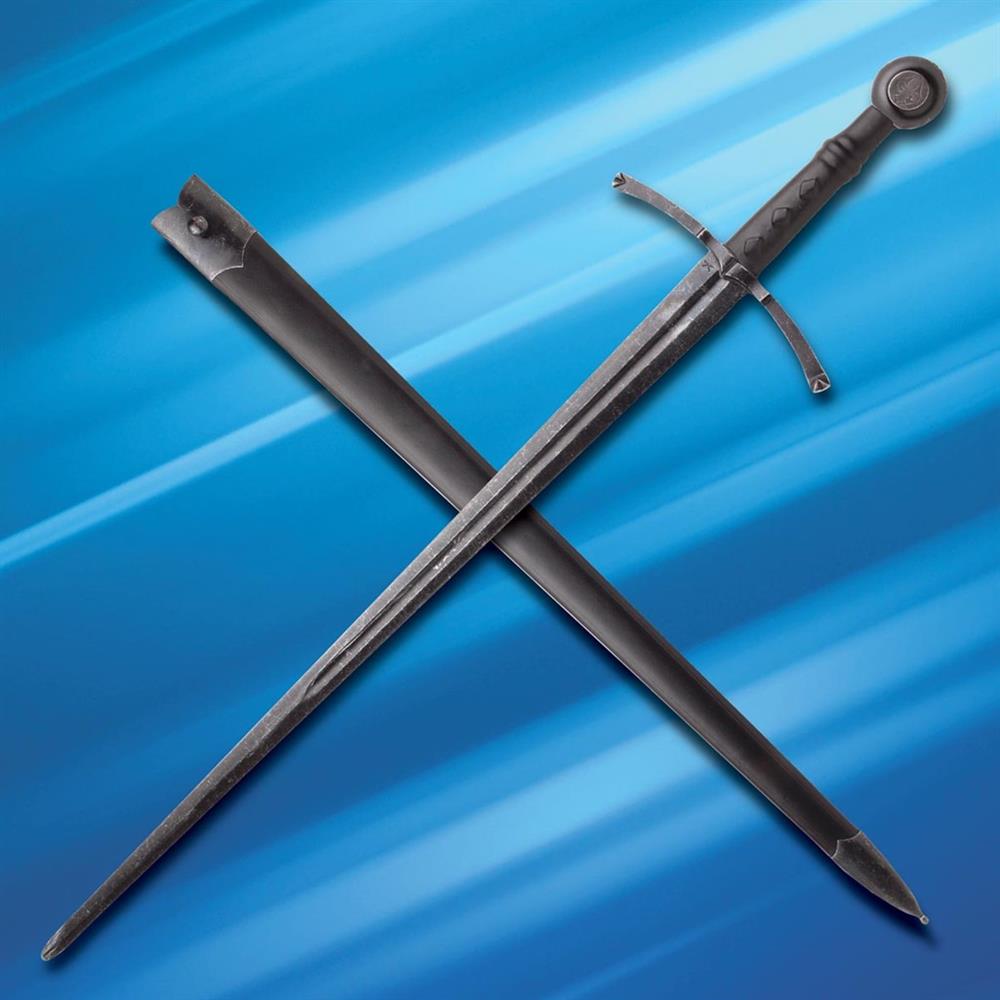
By John Clements
You can hold heritage in your heart, but with a sword you have history in your hand
For those who know, collecting swords goes far beyond having a mere costume accessory, wall decoration, or impractical curiosity. It really isn’t all that difficult to grasp (pardon the pun) how a given combination of blade and handle can result in a distinct type of weapon. With the variation of length, width, shape and curvature, they will produce differences when slashing, cleaving, stabbing, or warding. Even among swords of similar types they may have such functionally different handles, pommels, and guards that produce significant dissimilarity in how they can be employed. Just considering hilts alone reveals much about a sword’s particular manner of being gripped.
Looking at changes in styles of fencing from the 15th and 16th centuries to the 18th and 19th speaks volumes about the alterations cut-and-thrust-sword designs underwent. Earlier methods of swordsmanship used counterstrikes to ward off blows and employed considerable half-swording techniques as well as substantial grappling. They went up against a tremendous array of arms and armors under diverse fighting conditions. Later styles by contrast lost much of these things and instead relied on retrograde static blocking with far less dynamic footwork —employed in a far smaller realm of combat necessity.
Without certain experiences, though, it's difficult to obtain a deeper appreciation of how similar though different swords perform. I believe the simple explanation for why this occurs is due to knowledge gaps in a few key areas. Most sword enthusiasts do not get to handle and work with a wide variety of quality replica blades of different types to consider their attributes first hand. They also don't get to examine authentic specimens of different types (let alone of the same type) —and certainly not to vigorously exercise with them. Equally unfortunate is that few students of the subject today get to practice with sharp versions of different swords and perform significant cutting exercise on realistic target materials (or at least long enough for it to teach anything of real value). And, despite all the practice and all the sparring, most enthusiasts don't get to forcefully cross steel blades with experienced practice partners who can effectively employ the differences among various sword types. If these hands-on lessons are not acquired one way or another, what is remains is something no less important: history and heritage.
But admiration for the lore of the sword is found not only in knowing origins and purpose. It's found in its heft. You know it when you raise one to feel its weight, sense its balance, judge its length, estimate its reach, and find its centers of rotation or percussion. It is here that every enthusiast of the sword comes together regardless of whatever effort they make in studying fencing or learning how swords were once used. Collecting a specimen, appreciating its unique design, admiring its austere beauty and deadly craftsmanship is something we all share. This love of the sword, this respect for its iconic symbolism, comes from discovering the virtues of different designs from different ages, regions, and cultures. Yet only truly begins by acquiring swords. Gaining one leads you to compare and contrast it with another and another and another, achieving insight and appreciation with each new acquisition.
As one learns how they were gripped, how they could be held, what motions they encouraged and what actions they facilitated, our mind is opened to them as something more than practical fighting tools or obsolete objects. Own one and it's mostly a curiosity. Own another and just like that you now have started a "collection." It can grow in whatever direction you find appealing; perhaps even finding in time that one which most “speaks to you” —matching your personal disposition and temperament more than any other. That’s the way it is with swords. They were always personal weapons their owners identified with. The legacy and wonder of the sword is found not in its cultural or historical importance as an implement or artifact, but in what it means to you. It all begins by first having a blade to call your own. That’s why we collect swords.
Mr. Clements will be at our annual sale this year.
Mr. Clements will be at our annual sale this year.



